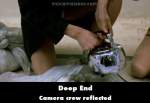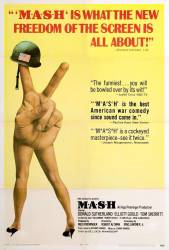
Revealing mistake: Near the end of the film, there is a football game played between the rival MASH units. Although the game is supposed to be taking place in a remote location of Korea in 1951, late model 1960's automobiles can be seen driving on a nearby highway as the game progresses. This gave away the fact that the football scenes were shot at a university in Southern California.
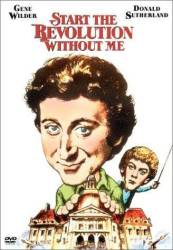
Other mistake: About 3/4 of the way through the film a boat arrives at the left quay of the Seine. Looking west down the river with Notre Dame on the right of the scene you can see a tour bus cross the bridge.
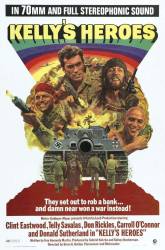
Revealing mistake: Blank firing adaptors are visible on the bow machine guns of Oddball's Shermans as they shoot up the rail yard. (01:00:05)
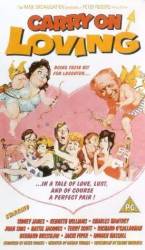
Continuity mistake: When the man puts jelly down his wife's dress during the food fight, Jenny Grubb's arm is not on the table. In the next scene, her arm is resting on the table, but in the scene after that, her arm is back in its normal position.
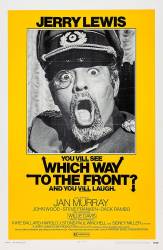
Revealing mistake: When the mayor's wife attempts suicide by stuffing herself with pills, she is lying behind a sofa, only her arm and the pill bottle being visible as she pours the contents into her mouth. In the next shot (a close-up), however, the crown of her head is visible, and it is evident that she pours the pills over the top of her head.
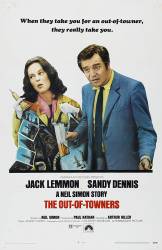
Continuity mistake: When the couple from Ohio is in the back of the squad car, the cop says that there is a hold up at a liquor store. When they get there, the store is clearly closed.
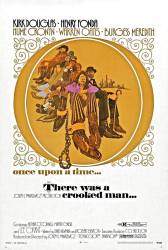
Continuity mistake: When Paris is offering all the other prisoners half of his hidden money for a way to escape, he lays down in his bed with his cigar in his mouth and his arms at his side. The camera angle changes to a wide shot of the holding cell and the cigar is now in his right hand near the edge of the bed.
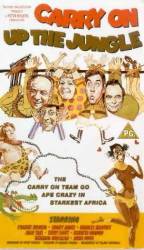
Revealing mistake: That isn't Joan Sims in the shower as seen from above. The stand-in doesn't remotely resemble her.
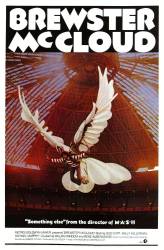
Revealing mistake: When Brewster is flying around in the Astro-Dome at the end of the movie, in a close up you can see the cables attached to him for a good second or so.
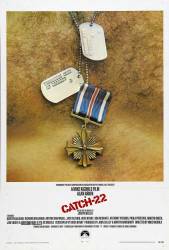
Continuity mistake: When 1st Lt. Milo Minderbinder has the egg in his hand and is explaining the profits that can be made, the egg is suddenly gone as he begins walking away.
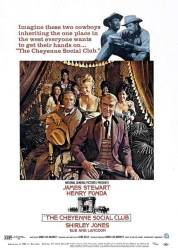
Continuity mistake: When the Bannister gang begins shooting at the house, the ladies abandon their breakfast to run and hide upstairs. There's a pitcher half full of milk on the table. But a few shots later, when one of the Bannisters bursts into the kitchen, the milk pitcher is empty, and the dishes are in different positions on the table. (01:23:55)
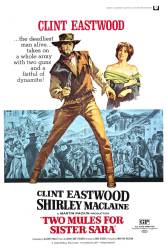
Factual error: When Clint Eastwood catches an Indian arrow in his left shoulder, he instructs Shirley MacLaine to prime the arrow shaft with gunpowder, which he then ignites as she forces the shaft all the way through his shoulder. Presumably, the burning gunpowder would cauterize the wound all the way through his body, or that's what the filmmakers asked the audience to believe. In reality, gunpowder is historically well-known for causing gangrene in open wounds. With a shoulder full of gunpowder cinders, Clint Eastwood should have died of gangrene and sepsis by the end of the movie.
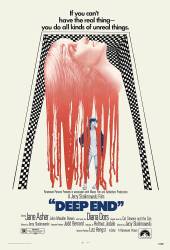
Visible crew/equipment: When Mike and Susan prepare to start putting pieces of snow in the kettle, in the shot where Susan hands Mike the kettle, and he begins taking the lid off, the camera crew can be seen reflected on the kettle. (01:16:00)
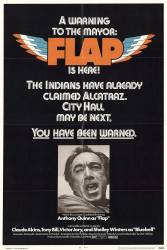
Other mistake: A little more than halfway through the movie, they are robbing the train cars by uncoupling and switching the switch direction back and forth to direct the unwanted engine and caboose to the left branch. He switches the switch to go right for the wanted cars and forgets to switch it for the caboose. If you look at the tracks of the switch, it is already set for the train to go left. He then remembers to change the switch and the caboose goes left where it would have already gone.
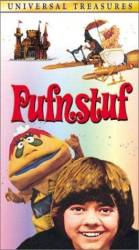
Revealing mistake: Whenever Stupid Bat is flying, the wires pulling him up are visible.
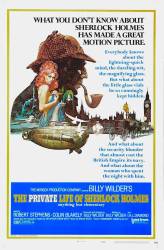
Other mistake: Like most Sherlock Holmes films 'The Private Life Of Sherlock Holmes' is set in Victorian England: Queen Victoria even makes an appearance. Holmes and Watson go to Loch Ness in Scotland, where they see the Loch Ness monster. (Spoiler alert) it turns out that the Loch Ness Monster is not a living creature, but an experimental submarine. Like most people who would have seen the film on its release in 1970, they are familiar with the Loch Ness monster (even if they do not necessarily believe in it). But the first documented sightings of the Loch Ness Monster were only made in 1933. Nobody ever thought there might have been a monster in Loch Ness before 1933.
Suggested correction: Sightings and lore of the Loch Ness Monster date back over 1,500 years. In fact, the indigenous people of the region carved images of the monster into stone as far back as 500 AD. The 1933 hoax was certainly not the first time the monster was sighted; however, the hoax was inspired by the centuries-old Loch Ness legend, of which Holmes, Watson and everyone else would be well aware in the Victorian era.
The only carved images from that period are Pictish symbol stones, none of which are particularly associated with Loch Ness.
On the contrary, the Pictish "Drumbuie Stone" (recovered at Drumbuie Farm on Loch Ness in the mid-19th Century) depicts a large serpentine creature, very much matching traditional descriptions of the Loch Ness monster. Https://canmore.org.uk/site/12626/drumbuie.
Suggested correction: This is somewhat incorrect. The 1933 photograph that was published in newspapers may have brought the idea of a Loch Ness Monster to a wider audience, reports of a creature in Loch Ness (or Loch River) were around long before then. And just because the term "Loch Ness Monster" may have first been printed in 1933 doesn't mean the term didn't exist before then. In a fictional story surrounding fictional events, there's no mistake in bringing up a creature already rumored to have existed.
Well observed sir! I thought somebody might well say that. Maybe I should have gone into more detail. May I make it clear that I have absolutely no problem with a sighting of the Loch Ness Monster in a Sherlock Holmes film, since Sherlock Holmes was a fictional character, and 'The Private Life Of Sherlock Holmes' was an imaginary story. (Plus the film contained some intentionally comic elements, it was a bit 'tongue in cheek', so lets not take it too seriously!) But lets look at the history of sightings of the monster. The first sighting to attract widespread attention was on 22 July 1933, when the Spicers saw a creature near (but not in) the Loch. On 12 November Hugh Gray took the photograph you allude to. In 1934 Rupert Gould published the first book about it. You say that earlier sightings may not have been widely reported. You are quite correct! One D. Mackenzie said he saw a monster in the Loch in 1872, but did not tell anybody at the time. A sixth century life of St. Columba records an encounter with a 'water beast' in the River Ness. My point was that, in the film, Holmes, Watson, and most other people, are familiar with the story of the Loch Ness Monster. (Spoiler alert again) : The 'monster' is an experimental submarine, which Sherlock's brother, Mycroft, is helping the war office to develop. To stop people realising they were experimenting with new military technology, they would develop the submarine in Loch Ness, so anybody seeing it would think it was the Monster (to add to the deception they give it an artificial neck and head). My point is that, while most people who saw the film in 1970, and most people using this website, would be quite familiar with the story of the Loch Ness Monster. So, whether or not they believe in its existence, they would get the joke (after all, the film was not meant to be taken completely seriously). In the Victorian era the Loch Ness Monster would, at best, have been a local rumour, not something that was known worldwide so it is doubtful that even people as undoubtedly intelligent as Holmes and Watson would have known about it. If they saw a monster in Loch Ness they would not say 'Oh, that's the Loch Ness Monster'. They would ask 'Whatever is that great big thing going through the water?'.
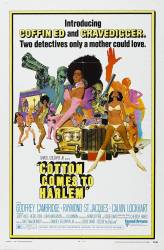
Revealing mistake: As the final chase for Deke starts, Ed tosses a wicker basket at Iris. The toss is already pretty weak looking, but to make matters worse, Judy Pace tosses the gun on purpose in front of her a moment after being 'hit'. (01:28:55)
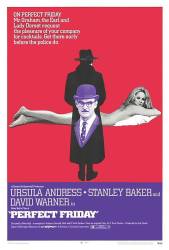
Continuity mistake: Lady Britt Dorset tells Mr. Graham to hop on her new car. He sarcastically takes exception to the car being 'hers', since she paid for it with the money he gave her. Between these two shots, his umbrella does a 180°. (00:10:50)
